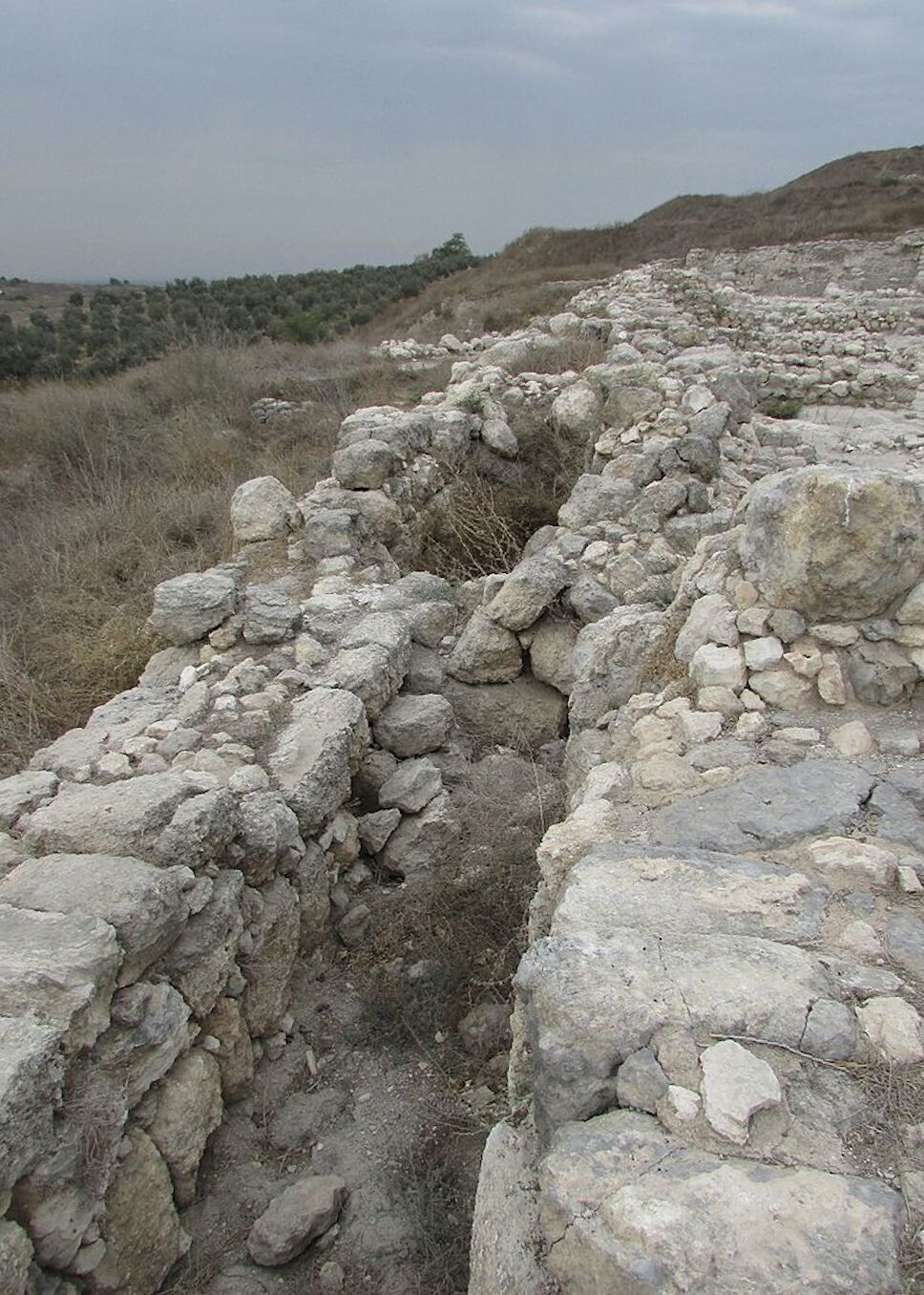What comes to mind when you think of a fortification line around an ancient city? Probably a firm, solid wall—one that is both wide and tall, strong enough to protect the population within from attacking forces.
Indeed, solid city walls are one common method of fortification. But another method common to the southern Levant (particularly during the Iron Age) is the casemate wall.
A casemate wall is a fortification line made up of essentially two parallel walls—a “double wall”—separated by a space in between. These parallel walls are each typically of a much narrower individual width than that of a solid fortification wall. In peacetime, the open corridors between these parallel walls can be used for storage or even as residences. In war, however, these open spaces can be filled with rocks and earth, essentially transforming the two weaker, parallel walls into one massive, solid-style construction. Depending on the distance between the parallel casemate walls—the inner and outer wall—once filled as one unit these walls can be even wider than a typical, solid wall construction.

Of course, there are plusses and minuses to both forms of wall (solid and casemate). Again, the casemate wall is an especially endemic style of construction to ancient Israel, peaking in the early Iron Age. As siege weapons improved (particularly those of the Neo-Assyrian Empire), there was an eventual transition to different forms of solid wall construction to withstand attack.
Casemate walls were originally believed to have been a Hittite invention, imported into Israel from the north. Presently, however, the earliest examples of casemate walls have since been discovered at various sites within Israel, with some dating to as early as the 16th century b.c.e. (such as at Tel Ta’anach).
The Bible alludes to casemates in several passages. The Prophet Isaiah’s warning in chapter 22 alludes to these walls and the preparations being made to them in advance of Sennacherib’s invasion. “And ye saw the breaches of the city of David …. And ye numbered the houses of Jerusalem, and ye broke down the houses to fortify the wall” (verses 9-10). This suggests the inner residential buildings were dismantled and the rubble was used to fill the casemates around the city.
Another well-known example is that of the harlot Rahab’s house in the city of Jericho. Joshua 2:15 reads: “Then she [Rahab] let them [the two spies] down by a cord through the window: for her house was upon the town wall, and she dwelt upon the wall” (King James Version). The Hebrew word for “upon” is actually in. Thus, the last half of this verse more literally reads, “her house was in the town wall, and she dwelt in the wall.” Of course, such phraseology does not at first seem to make much sense—until viewed in light of a casemate wall and the now-recognized practice of actually living in such “wall” quarters.

